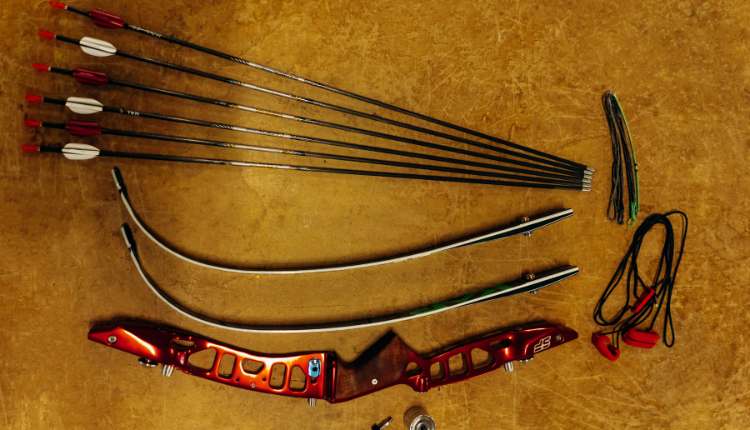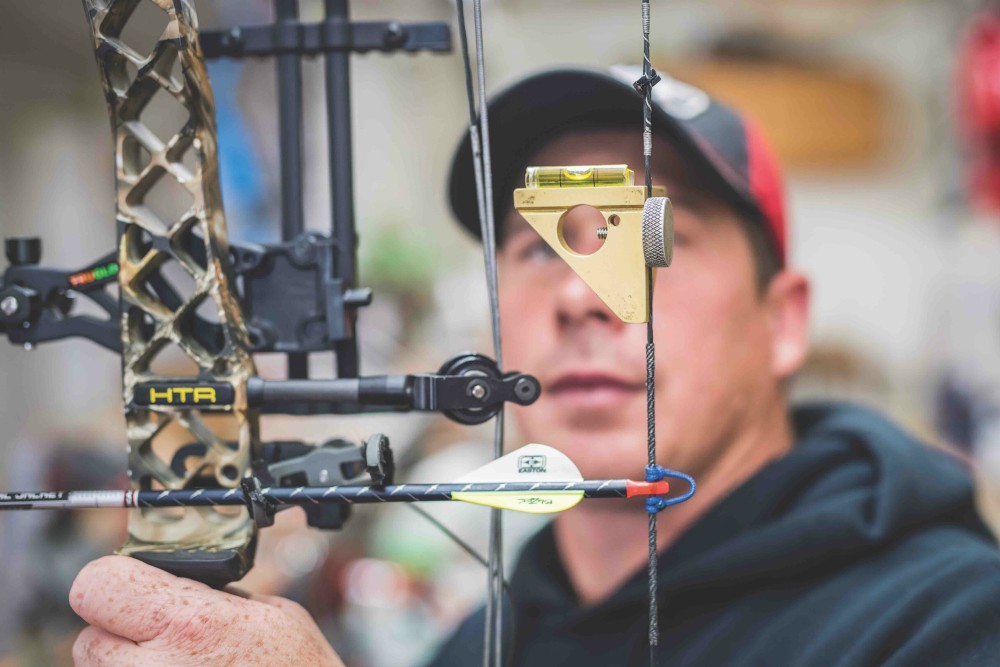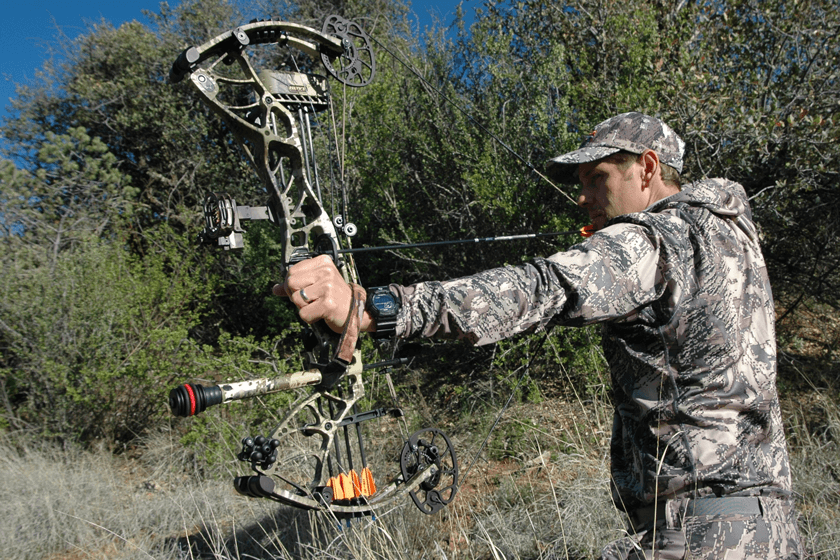When it comes to showcasing your beloved recurve bow, hanging it on the wall can be an excellent choice.
Not only does it provide a convenient storage solution, but it also adds a touch of elegance to your space.
In this step-by-step guide, we will walk you through the process of hanging your recurve bow on the wall, ensuring it is securely displayed while maintaining its beauty.
Follow these seven steps for a mistake-free and visually appealing result.
7 Steps on How To Hang A Recurve Bow On The Wall
Step 1: Gather the necessary tools
Before you start hanging your recurve bow, it’s important to make sure you have all the tools you’ll need. These tools are like your helpers for the job. You’ll need:
- Tape Measure: This is like a special ruler that helps you measure the right distance.
- Pencil: You’ll use this to make marks on the wall to show where things go.
- Level: It’s like a tool that helps you make sure everything is straight, like a line.
- Wall Anchors or Screws: These are like strong nails that you’ll put in the wall to hold your bow.
- Drill: If your wall is tough, you might need this to make holes for the anchors or screws.
- Screwdriver: This is for turning the screws to make them tight.
- Bow Hanger: This is a special hook made just for hanging bows.
Step 2: Choose the perfect location
Now, you need to pick the right spot on the wall for your bow. Think about your room. Where would it look the best? You want a spot with enough space, and it should match how your room looks.
Also, think about the light.
Don’t hang your bow where the sun shines on it a lot, or where it’s very wet, because that can hurt your bow over time.
Step 3: Measure and mark the placement
To make sure your bow hangs in the perfect spot, use the tape measure to figure out how high you want it to be on the wall.
Then, use the pencil to mark that exact spot on the wall. You can use the level to check if your marks are straight, so it looks nice.
You can measure recurve bow length for better accuracy.
Step 4: Install wall anchors or screws
Depending on how heavy your bow is and the type of wall you have, you might need to use wall anchors or screws. These are like the strong nails that will hold your bow in place.
If you’re not sure if your wall is strong enough, ask a grown-up for help or use the right kind of anchors for your wall.
If needed, you can use the drill to make small holes in the wall first, and then put in the anchors or screws.
Step 5: Attach the bow hanger
Now, it’s time to put the special bow hanger on the wall. Put it right where you marked the spot earlier with your pencil.
Use the screwdriver to make it very tight. Make sure it’s straight by using the level again.
Step 6: Prepare your recurve bow
Before you hang your bow, make sure it’s clean and dry. Check if the string and all the bow parts are in good shape. If you see any problems, fix them.
Then, place your bow carefully on the hanger so it stays in place.
Step 7: Test for stability and admire your display
To be sure your bow is safe on the hanger, give it a little shake. If it doesn’t move, take a step back and look at your awesome bow display.
Take a moment to feel proud of your work and how nice your bow looks on the wall. It’s like a work of art
What are alternative display options for a recurve bow?
As a home designer, there are several alternative display options to showcase a recurve bow that combines scientific principles with decorative aesthetics. Here are three options to consider:
Custom Display Case:
Constructing a custom display case offers a stylish and protective solution. Utilize transparent materials, such as tempered glass or acrylic, to enclose the recurve bow.
This not only allows for a clear view of the bow but also provides a barrier against dust, moisture, and physical damage.
Incorporate interior lighting to highlight the intricate details and craftsmanship of the bow, creating a visually captivating focal point.
Wall-Mounted Shadow Box:
A wall-mounted shadow box adds depth and dimension to the display. Choose a shadow box with a sturdy frame and a velvet or fabric-lined interior.
Place the recurve bow inside the box, ensuring it is securely fastened.
Add an element of personalization by including background materials, such as a hunting scene or archery-themed artwork, to enhance the overall visual appeal.
Display Stand or Pedestal:
Elevate the recurve bow’s presence with a dedicated display stand or pedestal.
Opt for a stand made from high-quality wood, metal, or a combination of materials that complements the bow’s design. Consider incorporating elements like curved or angled surfaces to highlight the bow’s graceful lines.
This freestanding display option allows for easy viewing from all angles and can be positioned as a striking centerpiece in any room.
Key Mistakes Should Avoid
There are a few mistakes to avoid when hanging a recurve bow on the wall:
Unstringing the Bow:
Imagine your bowstring is like a rubber band. Before hanging the bow on the wall, you should take off this rubber band.
It’s important because if you don’t, the bow might get bent out of shape or even break.
Think of it like a rubber band losing its stretchiness if you leave it stretched for too long.
Avoid Damp Places:
Don’t hang your bow in a bathroom or a place where it’s very wet or humid. Think about how metal can get rusty if it gets wet a lot. The same can happen to your bow.
Rust can make it weak and not work properly.
Using Strong Screws:
When you hang your bow, use screws that are really strong and long enough. Imagine if you tried to hang a heavy picture with tiny nails. It would fall down, right?
It’s the same with your bow. You need strong screws to hold it up securely.
Check for Stability:
After you hang your bow on the wall, give it a gentle push or wiggle. Make sure it stays in place and doesn’t feel like it’s going to fall off.
It’s like making sure a book stays on a shelf and doesn’t fall down.
Taking Care of Your Bow:
Just like you need to clean your toys or keep your bike in good shape, your bow needs care too. Regularly clean the string (that’s the part you pull) and look closely at your bow.
If you see any problems, like cracks or loose parts, it’s important to fix them. Think of it like taking care of a pet or a plant so they stay healthy.

Can I use any type of hanger to hang my recurve bow?
It’s important to use a hanger that is specifically designed to hold the weight and size of your recurve bow.
Using a hanger that is not designed for this purpose can result in the hanger breaking or the bow falling off and potentially being damaged.
If you are unsure what type of hanger to use, it’s a good idea to consult with a professional or refer to the manufacturer’s recommendations.
Can I hang my bow with the string still attached?
It is generally recommended to unstuff your bow before hanging it. This will reduce the risk of damage to the string and make it easier to hang the bow properly.
However, if you are unable to unstuff the bow for some reason, you can still hang it with the string attached.
Just be sure to be extra careful when handling the bow and make sure it is securely fastened to the hanger.
Can I hang my bow on any type of wall?
It’s important to consider the type of wall you will be hanging your bow on. If you are hanging the bow on drywall, you may need to use anchors to secure the screws and hanger properly.
On the other hand, if you are hanging the bow on a solid surface such as brick or concrete, you may be able to install the hanger directly into the wall without the need for anchors.
How often should I check the stability of my hung bow?
It’s a good idea to check the stability of your hung bow every few months or so.
This will ensure that the hanger and screws are still secure and that the bow is not at risk of falling off.
Additionally, it’s a good idea to check the stability of the bow anytime you make any adjustments to the hanger or the bow itself.
Conclusion:
Hanging a recurve bow on the wall is a simple and effective way to store and access your bow. By following the steps outlined in this article, you can hang your bow in just a few minutes.
Remember to always handle your bow with care and properly store it when not in use to ensure its longevity and functionality

General Manager & Auditorial Head.
Killian Jake is a World Sports Traveler and hobbyist sports lover. By exploring different sorts of playing modules like indoor, outdoor, and many more. As for professionalism and writing, it’s helpful to give you the right suggestions on different games and sports.

![How To Hang A Recurve Bow On The Wall [ 7 Steps ]](https://sportsue.com/wp-content/uploads/2023/05/How-To-Hang-A-Recurve-Bow-On-The-Wall-7-Steps-.jpg)



